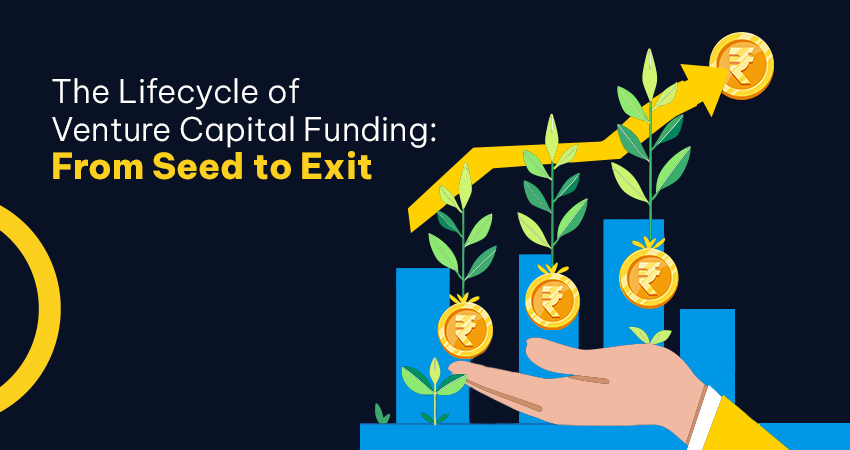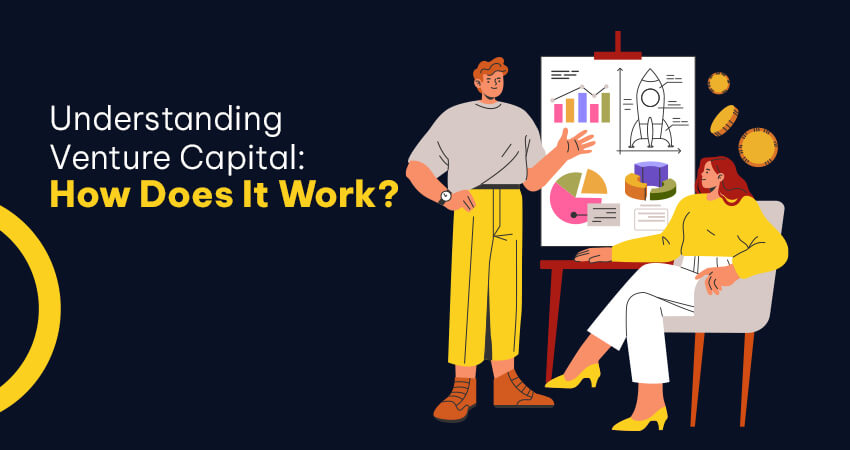
The Lifecycle of Venture Capital Funding: From Seed to Exit
Venture Capital funding (VC) helps promising startups become established businesses. Entrepreneurs tackling India’s complex startup ecosystem need to understand the phases of venture capital—from seed funding to exit.
In India’s vibrant startup ecosystem, this journey has fueled the rise of countless ventures and even unicorns. In this blog, we break down the key stages of Venture Vapital funding and illustrate how firms like Rukam Capital support startups at each step of the way.
- Seed Stage: Transforming Ideas into Reality
In this phase, funding is provided as entrepreneurs work to validate their ideas. Indian startups typically work towards creating prototypes while achieving product-market fit as well as attracting new consumers.
Ranging from $500,000 to $5 million, India’s seed rounds are generally higher in amount than those offered in other regions. Investors at this stage—angels, incubators, and seed-focused VCs- analyze the ideas based on the founder’s abilities and overall market conditions.
Ideas presented in this phase hold little to no financial value, creating substantial risk for investors. Therefore, Venture Capital firms focus on vision and user responsiveness when evaluating market opportunities.
- Series A: Scaling Up
The very first institutional round that professionally funds a startup is Series A, and it is geared towards scaling up validated business models. In India, investment sizes are pegged at 2 million to 15 million dollars. At this stage, startups have to show their growth in terms of product-market fit, customer adoption, and revenue metrics.
At this stage, Venture Capital firms look for user engagement, revenue streams, scalability, and team dynamics. Key hires, market presence, and operational strength can all be activated or upscaled with this round of funding.
- Series B: Growth Acceleration
From series B and then onwards (C, D, etc.), startups intend to scale up aggressively to capture more market share. These rounds receive major investments between 10 and 50 million dollars, with the sole purpose of enhancing market coverage and profits.
In this era, Venture Capitalists provide guidance for strategic business decisions, growth & development, and establishing core partnerships that are necessary for continued success.
At this stage, focusing on growth, profitability, and operating efficiency is the most crucial component for Venture Capital firms.
- Expansion to newer Tier 1 and Tier 2 cities
- Strengthen logistics with a more robust delivery fleet
- Enhancing technology that offered a smoother customer experience
- Recruiting top-tier talent for leadership roles
- Late-Stage Funding: Preparing for Exit
The later stage or pre IPO rounds are characterized by large-scale funding aimed at dominating the market. The focus is then shifted to preparing the company for an exit via IPO or acquisition. At this stage, rounds of funding may be worth hundreds of millions as they are offered by international venture capitalists, private equity, strategic corporates, or institutional funds.
Startups at this phase need to demonstrate a healthy financial record, be a significant leader in the market space, and showcase a clear path towards sustainable profit. This is also the stage where companies purchase smaller rivals, expand their portfolio, or prep themselves for scrutiny as public companies.
$3.6 billion was invested in Flipkart just before their IPO, highlighting the strategic positioning offered by late-stage funding towards successful exits. Primary early-stage investors also offer post-investment guidance and facilitate connections to later-stage investors.
- Exit: The Ultimate Goal
Venture-backed exits mark the financing milestones for startups while providing returns on investment for the founders. Initial Public Offerings (IPOs), mergers and acquisitions, or secondary sales represent the most common exit strategies.
IPOs: Going public brings enormous liquidity, visibility, and a fresh influx of capital. Zomato, Paytm, and Nykaa are Indian startup IPOs that serve as examples of the public market potential and appetite for high-growth firms.
Merger & Acquisitions: Acquisitions often have faster and more lucrative exit options for investors. India’s largest startup exit is still Flipkart’s acquisition by Walmart for USD 16 billion, which remarkably returned value to the company’s early investors and founders.
Secondary Sales: An earlier-stage investor selling his/her stake to a newer investor during later rounds is one way to partially exit an investment.
Public markets provide exits that have a “systemic effect,” where, because funding is available, the needed capital ensures seasoned entrepreneurs and investors can effectively leverage their success and invest in new startups, thereby spurring further innovation.
Challenges Across the Lifecycle
- Every stage of funding is associated with specific burning issues:
- Seed Stage: Having little traction, high uncertainty, and convincing investors.
- Series A/B: Striking a balance between aggressive growth and operational austerity, coupled with sophisticated headcount scaling.
- Late Stage: Higher growth benchmarks with fierce scrutiny, steep expectations, preparation to go public or be acquired by strategic buyers.
A Convergence of Opportunities for Growth
The lifecycle of venture capital funding – from Seed to Exit – is like a multi-stage rocket propelling a startup to success. The seed stage ignites the engine, Series A lifts the startup into the sky, Series B and C accelerate it into orbit, and late-stage funding helps it navigate the final frontier towards a successful mission completion. Each stage comes with its unique set of goals and trials, and each builds upon the last.
In summary, the venture funding lifecycle is an adventure of growth. Each stage is a learning phase for the startup – crawl, walk, run, and finally, fly. Entrepreneurs who understand the expectations and challenges of each funding stage are better equipped to navigate their companies to a successful exit. And with a supportive venture partner by their side, they increase their odds of not only reaching the finish line but doing so with a thriving business.
The story of seed to exit is ultimately a story of evolution – of an idea that grows under the right conditions, much like a seed planted in fertile soil and tended carefully, eventually blossoming into something remarkable.

